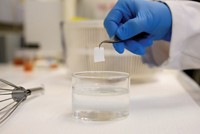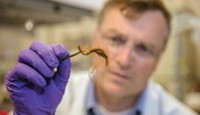Advertisement
Grab your lab coat. Let's get started
Welcome!
Welcome!
Create an account below to get 6 C&EN articles per month, receive newsletters and more - all free.
It seems this is your first time logging in online. Please enter the following information to continue.
As an ACS member you automatically get access to this site. All we need is few more details to create your reading experience.
Not you? Sign in with a different account.
Not you? Sign in with a different account.
ERROR 1
ERROR 1
ERROR 2
ERROR 2
ERROR 2
ERROR 2
ERROR 2
Password and Confirm password must match.
If you have an ACS member number, please enter it here so we can link this account to your membership. (optional)
ERROR 2
ACS values your privacy. By submitting your information, you are gaining access to C&EN and subscribing to our weekly newsletter. We use the information you provide to make your reading experience better, and we will never sell your data to third party members.
Analytical Chemistry
Mass Spec Method Fingerprints Dyed Fibers
Technique causes minimal damage to forensic evidence, allows cross-checking of crime scenes with suspects
by Sarah Everts
November 12, 2012
| A version of this story appeared in
Volume 90, Issue 46
Forensic scientists hoping to cause minimal damage to critical evidence may have a new analytical technique to study suspicious fibers found at crime scenes (Anal. Chem., DOI: 10.1021/ac3025569). Chuanzhen Zhou, David Hinks, and coworkers at North Carolina State University developed a mass spectrometry method to identify dyes on nylon, and they are now working to extend the technique to polyester and cotton fibers. The researchers first clean the fiber surface by using a C60+ fullerene ion beam and then use Bi+ ion beam time-of-flight secondary ion mass spectrometry to take a chemical fingerprint of the dye, fabric, and any other trace material on the fiber surface. Hinks says the technique could provide essential backup for existing forensic fiber analysis techniques while consuming an insignificant amount of the evidence to do the experiment. Most forensic labs currently use polarized light microscopy to identify fibers, and some labs then extract dye from the fiber and analyze it by thin-layer chromatography, he notes. By analyzing fiber and dye together in situ, the new technique will allow researchers to identify the material’s trace contaminants for additional comparison between fibers obtained from crime scenes and from suspects, the researchers suggest.




Join the conversation
Contact the reporter
Submit a Letter to the Editor for publication
Engage with us on Twitter